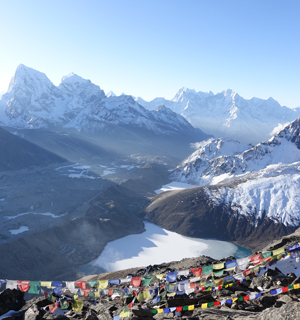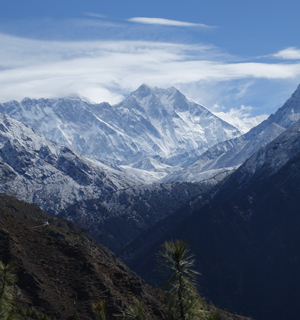
When you come to Nepal, home to eight of the world’s highest mountains, all over 8000 metres, you are visiting part of the “roof of the world”. The lowest point of Nepal in the Terai, the lowland adjacent to the Indian border in the south has an altitude of only only 59 metres! This is the region in which Buddha was born. The geography of this small country of approximately 147,000 square kilometres is astonishingly varied. Hot, jungled areas in the south lie not that far from the rugged alpine precipices, snows and ice of the giant mountains. From sultry low-lying Chitwan you can see the mighty Anna Purna Range on clear days. Please bear all this in mind when preparing for your trip to Nepal. Clothing, both traditional and western, as well as outdoor and trekking gear are all readily available in the bigger towns and cities, so if you forget certain necessary items, you will most likely be able to buy what you need locally. Be respectful when you enter places of worship and dress modestly. Buddhism and Hinduism exist closely side by side in Nepal and the people genuinely respect the traditions of both these religions, irrespective of their faith.
The topography makes for stunning landscapes but isolation in the past has resulted in delayed economic development which is seen in many aspects of contemporary life. It is advised not to give to beggars but do give a tip if you feel you have received good service. Every extra dollar can make a huge difference to the quality of life of local workers.The Nepalese people are justifiably very proud of their small mountain fringed nation wedged in between the two mega powers of China and India, and are generally very welcoming and friendly to overseas visitors. The most recent catastrophic earthquake in April 2015, while leaving a mass of destruction, has also acted as a catalyst for new housing to be constructed in many of the remote, devastated villages. Once again, if you are from a wealthy country, a couple of dollars may not go that far at home, but even seemingly small amounts of money could really make a difference to struggling local families in Nepal. The local currency is Nepalese Rupees.
You will need to acquire a tourist visa either in your home country or on arrival either at Kathmandu Tribhuvan Airport (1400 metres altitude) or at one of the land border points before being permitted to enter the country. If you are travelling to mountainous areas, you need to be aware of the potential risks of mountain sickness which may possibly occur at over 2500 metres altitude, but which cannot be predicted in individuals, so gradual acclimatisation and slow ascent of mountains are always recommended. Once again, prepare for extreme weather in mountainous regions whatever the season, as conditions can change rapidly in these areas. You are strongly advised to trek or climb with an accredited and reputable company such as Encounters Nepal and definitely never to trek alone.
The monsoon season is generally from June until September and is not the best time to be travelling in Nepal. Do not drink water from any tap; be prepared outside of hotels in the larger cities for squat toilets, with just a bucket of water for flushing.
English is spoken quite widely in Nepal. Festivals are colourful and frequent. Join in with the colour and music and parades. Be prepared for a unique and unforgettable travel experience.

